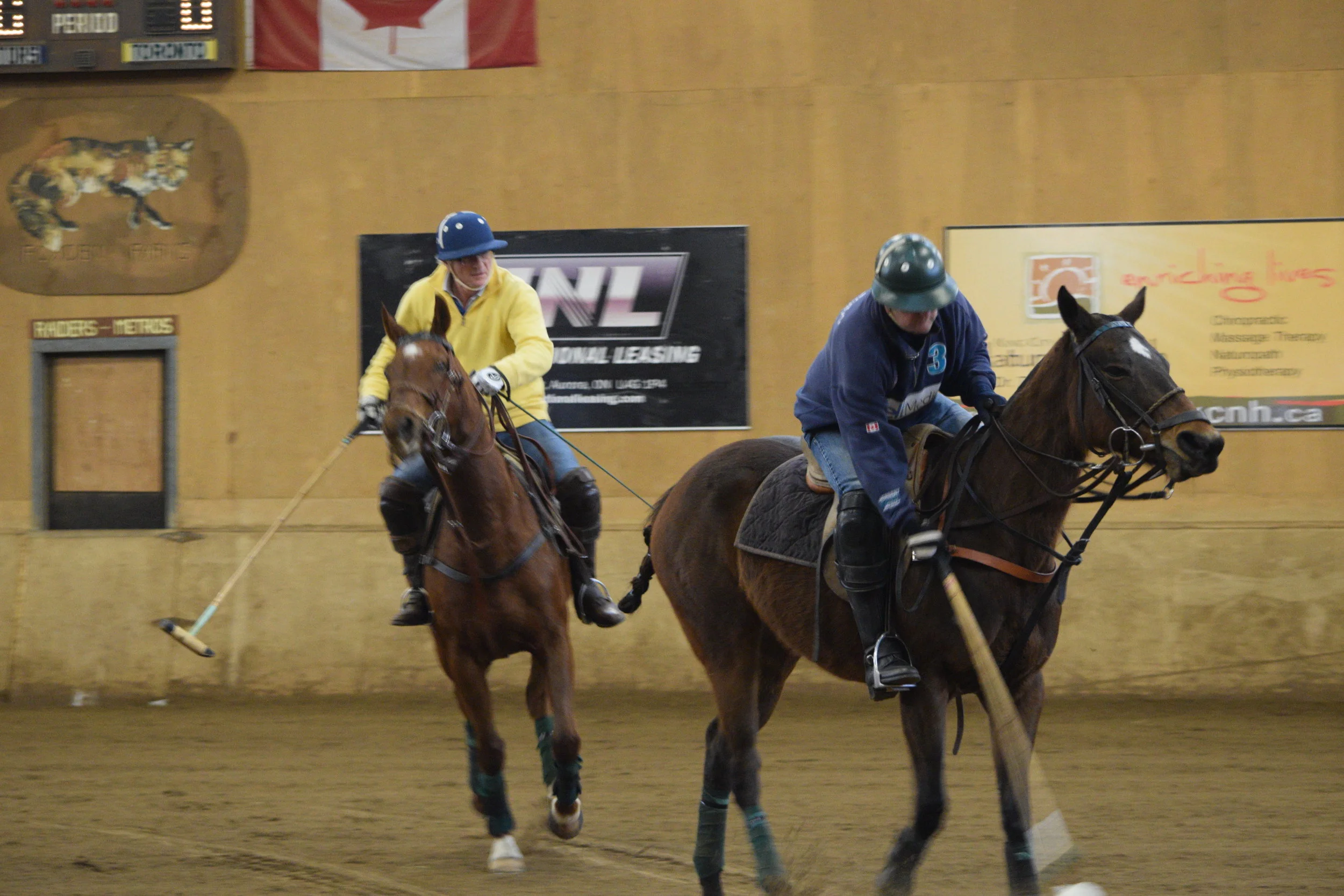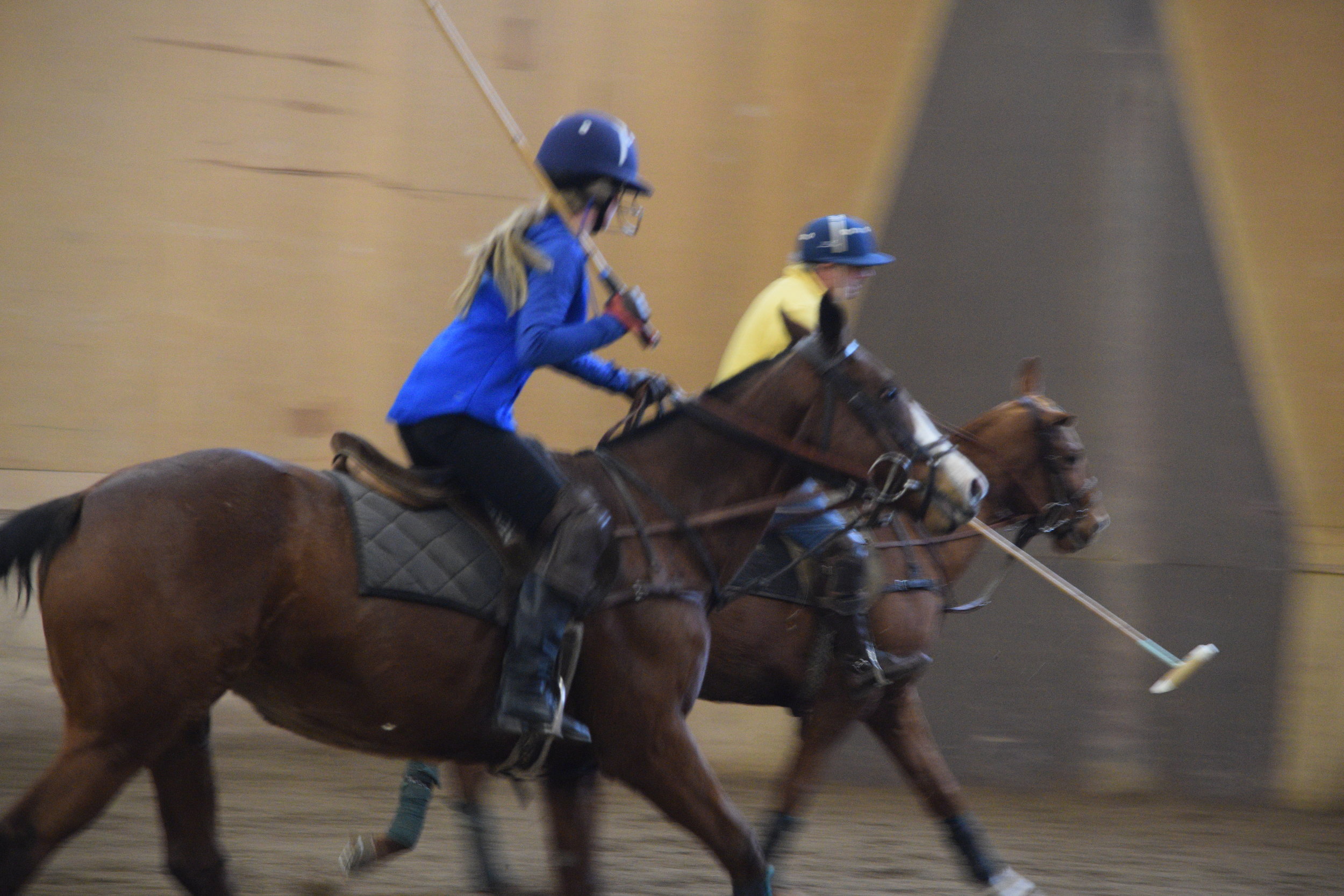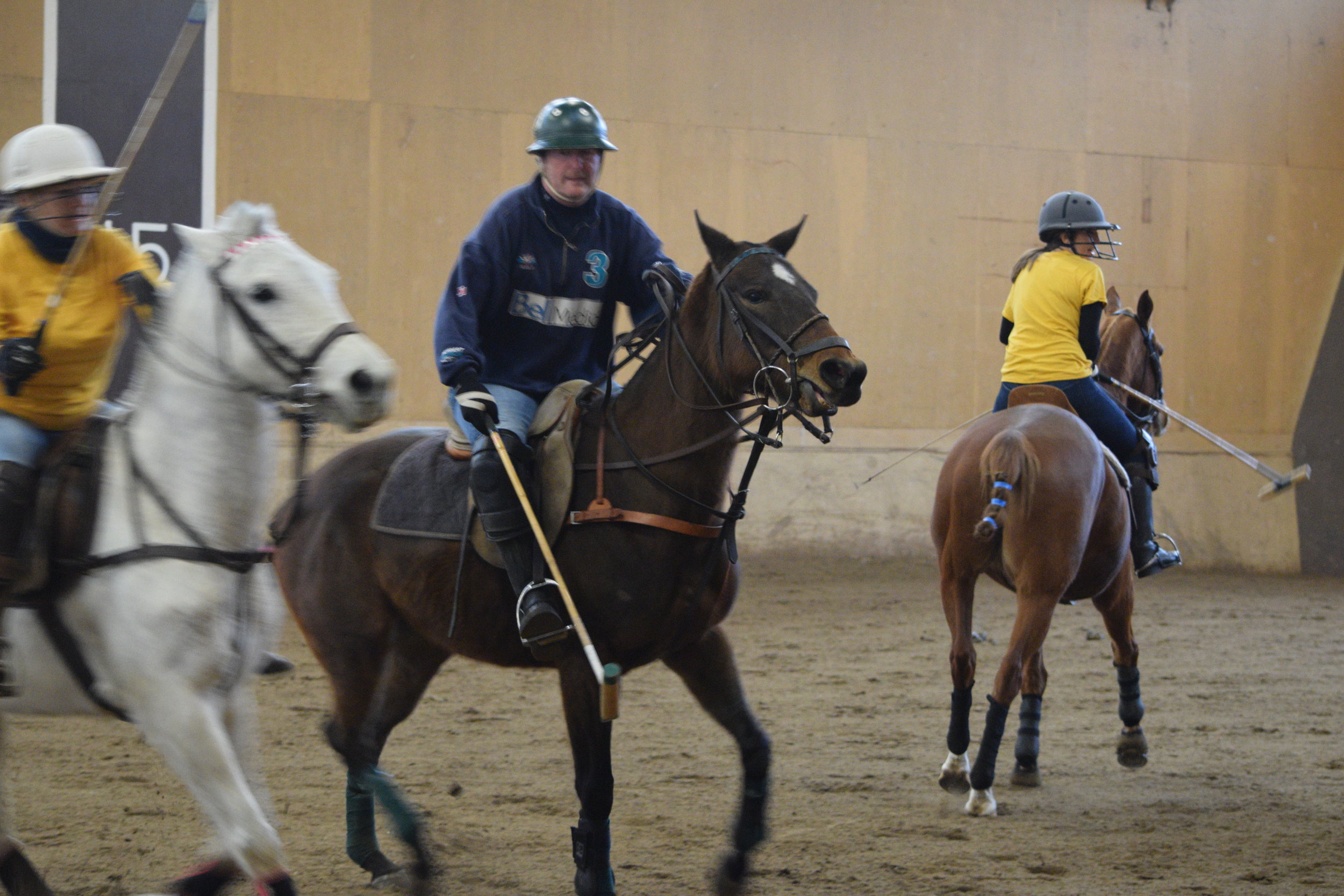There are two types of cold climate polo players in this world; diehards and sun seekers. The sun seekers are those players that are lucky enough to be able to follow the sun for days, weeks or months at a time when winter descends at home and the cold weather makes playing just a little bit less enjoyable. These players have found a way to carve out space in their busy schedules to head south and keep their field polo skills sharp and their polo addictions fed.
But for the vast majority of us, save for a week here and a few days there, heading south for the winter just isn’t a feasible way to keep us playing polo through the dark, cold winter days. And that’s where arena polo comes in.
Arena polo is a hotly contested topic in the polo world with many players coming out either in favour or against the version of the sport. Nearly every player can admit that yes, arena polo is not field polo. It’s played in, well, arenas for starters not under a warm sun on a massive grass field so naturally it doesn’t feature the same adrenaline rush and it’s played in the cold of winter so yes, sometimes players will find their extremities going numb and their eyes watering from the cold air. But if you can look past the criticisms of arena polo you’ll find that there are few advantages to playing arena polo and so long as you accept that it’s definitely not field polo it can be a fun way to keep playing through the long cold winter.
1. It can keep your horses in playing shape
Depending on where in the world you live, winter can seem like it’s never going to end, and in some places, winter may actually be longer than the field polo season. For cold climate players, playing arena polo is the only way to keep polo skills sharp and horses in shape. And while, yes, it doesn’t hurt to give your horses a few months break, playing arena polo even in late winter as a way to get your horses’ fitness up so that they are ready for the field when the snow eventually melts is a good way to ensure that you can make the most of the field season because no one wants to be fighting with fresh and unfit horses when the field polo season does finally kick off.
2. It keeps you playing
It’s not perfect, as we said above, it can be bitterly cold and there isn’t the same rush when you hit the arena ball but it does keep you swinging a mallet and especially for beginners it keeps you learning so you don’t have to start all over again in the spring. Besides, what’s that quote? ‘No time spent in the saddle is wasted’.
3. It improves your riding
Because it’s played in a much more confined space than field polo with solid walls rather than tiny boards that can easily be jumped over, arena polo can really improve your riding and balance. After all, it takes less than half the time it takes outside to get from one end of the arena to the other; now add the game to that and equals a lot of stopping and turning and if you’re not balanced on your horse all those tricky maneuvers will have a way of letting you know…and fast. There’s no getting away with anything in the arena. Whereas outside, horsepower and speed play a role in the success of any particular player, inside it’s nearly impossible to outrun your opponent because within seconds you’ll both hit a wall and have to stop and turn. Take your game inside and you’ll see just how much you got away with outside on that big huge grass field when it came to your balance and riding.
4. It can help to teach young horses to play the game
At the Toronto Polo School, we often use arena polo not only as a way to teach our beginner players how to play the game but also our polo ponies in training. With the arena being a controlled environment it’s a good way to test a pony’s skills before unleashing it outside on the field, very much the same logic that is used for beginner players. And the similarities between ponies in training and players in training don’t stop there, the arena teaches the same fundamentals of balance, stopping and turning to the ponies that it teaches to players. A young pony that has played an arena season will be a much more maneuverable and experienced horse when it’s unleashed onto those big grass fields come spring.
Photo of Polo Pony in Training, Paris
5. It teaches you to stop and think
Outside, a player that is a strong rider and comfortable at speed will be able to get away with a lot assuming they can somewhat reliably hit the ball. The cushion of an extra few acres makes all the difference. However; in the arena, it’s a different story, no matter how strong a rider a player may be, they still have to be able to think through plays and their moves before they make them, we at the Toronto Polo School call it ‘stopping and thinking’. The confined space means that there is always an opponent within reach and suddenly a nice tail shot won’t be enough to get you out of trouble. Not to mention, assuming you follow the rules and stay safe the name of the game is control not speed. And the number one rule we have when you get possession of the ball is to stop what you’re doing (maybe not literally) and look around; determine where your teammates and opponents are, think about what your options are and then make your move. And there you have it; the stop and think.
6. It teaches you the short game
In the same sense that it teaches you to ‘stop and think’ arena polo also has a way of teaching you the short game and forcing you to improve your short game. Most players when they stick and ball outside only really focus on long shots because it feels (and sounds) so good to hit the ball. Skills like stick handling, dribbling and turning the ball rarely get worked on but can make all the difference in the arena. Play a few arena games and suddenly you’ll find yourself practicing those crucial skills for your next match. As we said above, the name of the game is control, and ugly goals totally count in the arena; meaning checking your horse and walking that ball into the goal on the end of your stick is totally legal and very effective. Not to mention, given that tail shots in the arena more often than not mean that the ball ends up on the end of your opponent’s mallet; turning the ball is a valid option that keeps the ball in your possession the whole time…control, control, control.
7. Strategy, Strategy, Strategy
In the arena, it all boils down to strategy and the player that can best control their horse, the ball, their opponent and the game best will succeed the most. Because of the confined space of the arena, getting into plays and making sure that you’re always in position is a lot harder than it is outside because everything happens faster. Not to mention, being in position is even more important inside than it is outside because an open player practically equals a goal thanks to the confined space of the arena. Believe us when we say that you’ll know when you’re out of position in the arena. The upside to playing a winter of arena polo is that when you do get back outside you should be able to better recognize plays and react to them because suddenly you have more time and space. Consider the arena your crash course to polo strategy, your field polo game will thank you.
When approached the right way; with an open mind and a goal towards improving your field polo skills, arena polo can be a productive and educational way to while away those long cold winter days. We all love field polo, it will always be our favorite, but arena polo will do for now…and as long as we’re galloping around swinging a mallet we’re happy, how about you?





